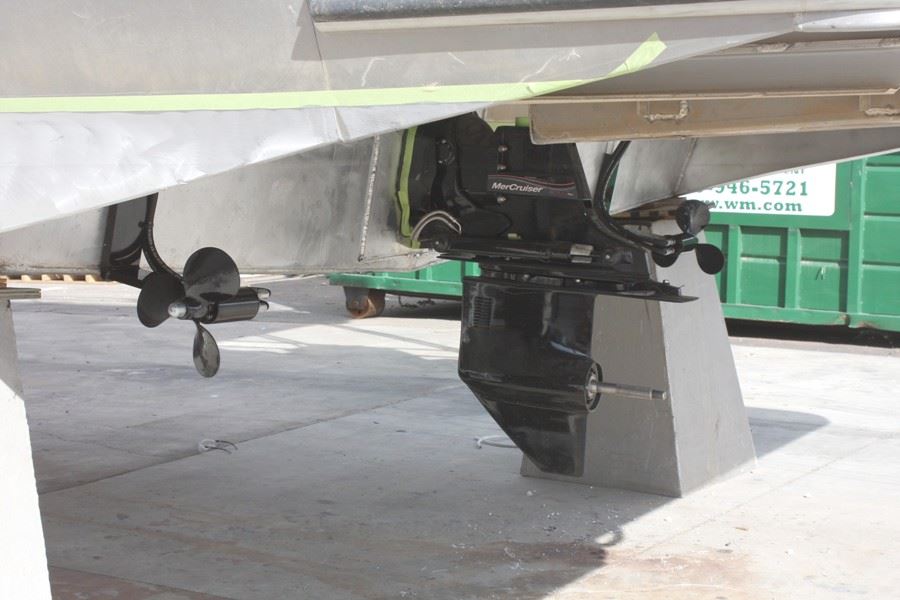
Ask around the docks, “Do you think I need thrusters on my houseboat?” and you’ll meet with mixed reviews. Seasoned captains may shrug and insist you can get by just fine without them. Those who never have will probably say quite the opposite. Like a lot of amenities on your boat, thrusters may not be a necessity but they will greatly increase the comfort and enjoyment of your time behind the helm. Ultimately, it is a matter of personal preference. It’s probably true that you’ll survive but what about your houseboat? In an ideal world, the wind isn’t going kick up just as you’re rounding the dock to pull in to your slip. Optimally, you’d have no traffic to contend with and ample room to maneuver your vessel widely for a straight entry. It would be nice to have control over the elements but as we all know, conditions are often far from ideal.
That’s when thrusters come in to the mix. Bow or stern thrusters (or both) enable greater flexibility of movement, which can be hugely helpful when maneuvering a tall houseboat with a shallow draft against a busy dock or in close quarters. Properly used, thrusters can help you avoid the notorious dock mishap, making a more enjoyable day on the water for both captain and crew.
Thrusters
Deciding what you need may seem a little confusing at first. In its most basic explanation, thrusters are a mechanism that helps you control the lateral motion of your houseboat. They may be attached to—as in the case of an open prop thruster—or placed in a tunnel through the hull Although they come in a variety of formats including single or twin propeller styles, the basic concept is to create a water jet that enables you to move in a changeable direction. Most types of thrusters offer similar benefits—the difference being where they are located. The primary benefit of both is lateral propulsion. Bow thrusters are designed to enable the front of the vessel to arc out from its pivot point at the aft end of the boat. Stern thrusters on the other hand, focus the pivot point closer to the center of the boat. If you own a larger boat, you may want to invest in both but given the choice between one or the other, the details become a bit more complicated. If you opt for a tunnel style, you’ll gain the most benefit from placing them in the bow during production. If you are looking for aftermarket stern thrusters, you’ll optimize your dollars most effectively by purchasing an external, open-prop thruster from Hydraunatics. This style does not require tube placement and Hydraunatics ais able to come install the thruster at the dock without having to pull your boat from the water in about half a day’s time. According to Dick Gragert, president of HydraNautics, who specializes in houseboat thrusters, this type of hydraulic thruster enables pivot even underway, something that a tube thruster cannot accommodate as effectively. Tube and external thrusters react differently in the water and will provide varying results in cooperation with your houseboat’s hull because of its shallow draft. The biggest service you can offer yourself is to check around, investigate your options and ask questions that relate specifically to your houseboat’s hull design prior to making a commitment.
When deciding between electrically or hydraulically driven versions, know that electrical thrusters may be less costly initially but are designed to offer shorter bursts. Hydraulic thrusters can sustain a longer use for more powerful movement. Regardless of what type of thruster you choose, the objective of thrusters is to provide lateral movement, which enables optimal handling and control when trying to maneuver through tight waters—or out of your slip on a busy Saturday at the dock.
Installation
Although it is optimal and more affordable to plan for thrusters to be installed during the initial construction of a houseboat, it is feasible to retrofit them post-production. But because retrofitting tunnel-style thrusters requires the boat be pulled out of the water, be sure you are committed to doing it right the first time. Another decision you will have to make is how to power your new purchase. One very sound and cost-conscious solution for hydraulic thrusters is to utilize your generator to power the hydraulic pump.
“Primarily what we’re using today is hydraulic thrusters. When you have a hydraulic thruster, you have to have a hydraulic pump which is normally mounted to the generator—either directly coupled (which runs continuously) or belt driven to a clutch pump.” Explains Gragert. “You will save money in the long run by having a clutch installed with a belt drive so that when you hit the thruster, the pump turns and when the thrusters are not in use, the pump is not running. Not only does this save on wasted horsepower and wear and tear on your generator but it also saves on fuel.”
Operation
The biggest benefit of thrusters is handling—they can make even the most inexperienced captain look better. But it’s vital to understand how they will change the handling of your vessel. Once you’ve installed new thrusters, make sure you have a good feel of how they will react with your boat. In open water, test out varying bursts to determine how your new thrusters move your vessel. Try to find a secluded dock and give yourself plenty of space to move around, taking note of how the vessel pivots. Once you’ve got the hang of operating them, you’ll find thrusters are quite simple and comprehensive—and probably wish you’d had them all along. When the wind kicks up and you find yourself in a pinch, you’ll be patting your own back for making a wise investment.